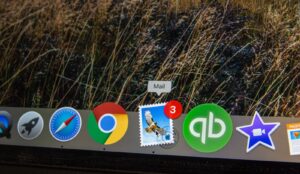Captivate with Great Scroll-Stopping Visuals
In the fast-paced world of social media, capturing users’ attention is a daunting task. Among the myriad of posts flooding their feeds, an eye-catching image that stands out can be the key to stopping the scroll. However, it is crucial to strike a balance between visual appeal and information sharing. In this article, we will delve into the art of properly sizing images for social media posts, emphasizing the importance of using visuals as scroll stoppers while reserving the details for the accompanying text.
The Scroll-Stopper Effect
A scroll-stopper is an image that instantly grabs the viewer’s attention, encouraging them to pause and explore the content further. By focusing on visually captivating images, you can effectively increase engagement and click-through rates. You don’t want to communicate the main information ON the image. You want to capture attention so they read the text above your image (and hopefully click, comment or share)!
Why Avoid Placing Majority Information in Images?
While an image is a powerful tool to draw attention, cramming it with excessive text or details can be counterproductive. Social media platforms compress images to fit their dimensions, potentially rendering the text unreadable. Moreover, many users prefer quick and visual consumption of content, making text-heavy images less appealing. Instead, let the image act as a teaser or enticement to explore the post further.
The Role of Proper Image Sizing
Each social media platform has its own unique image dimensions, and adhering to these guidelines is vital for a seamless user experience. Here are some key points to consider for popular platforms:
-
Facebook: For feed posts, use images with a 1.91:1 aspect ratio (1200 x 628 pixels). For link posts, aim for 1.91:1 or 1.91:1 with a minimum size of 600 x 314 pixels.
-
Instagram: Square images (1080 x 1080 pixels) are ideal for the feed, while vertical images (1080 x 1350 pixels) work best for Stories.
-
Twitter: Optimal image size for tweets is 1200 x 675 pixels with a 16:9 aspect ratio.
-
LinkedIn: For shared posts, go for 1200 x 627 pixels with a 1.91:1 ratio, while LinkedIn Stories benefit from 1080 x 1920 pixels.
-
Pinterest: Vertical images (1000 x 1500 pixels) tend to perform better on this platform.
We strongly recommend using a product like Canva to generate your social media images.
The Art of Scroll-Stopping Images
Here are essential tips to create scroll-stopping images that drive engagement:
-
High-Quality Visuals: Use high-resolution images that are clear, striking, and relevant to your content.
-
Branding: Maintain brand consistency by incorporating your logo or color scheme subtly.
-
Minimal Text: If you must include text, keep it concise and legible. Save the details for the caption or post text area.
-
Color and Contrast: Employ vibrant colors and contrast to make your images visually compelling.
-
Test and Analyze: Experiment with different image styles and track their performance to understand what resonates best with your audience.
Different Platforms, Different Approaches
While visual appeal is crucial across all platforms, remember that each social media site has its distinct user behavior and preferences. For instance:
- Instagram emphasizes highly curated, visually pleasing images.
- Twitter users often prefer quick, concise visuals that complement their tweets.
- LinkedIn audiences appreciate professional and informative images that add value to their feeds.
Mastering image sizing for social media posts is essential for driving engagement and stopping the scroll. Strive to create visually captivating images that complement your content without overwhelming viewers with excessive text. By adhering to the recommended image dimensions for each platform and understanding the preferences of your target audience, you can effectively leverage social media visuals to boost engagement, reach, and ultimately achieve your marketing goals. Remember, the art of scroll-stopping images lies in creating a seamless visual experience that entices users to delve deeper into your content.
We recommend taking the Meta Blueprint courses to learn best practices for social media. Pinterest also has their own courses.





